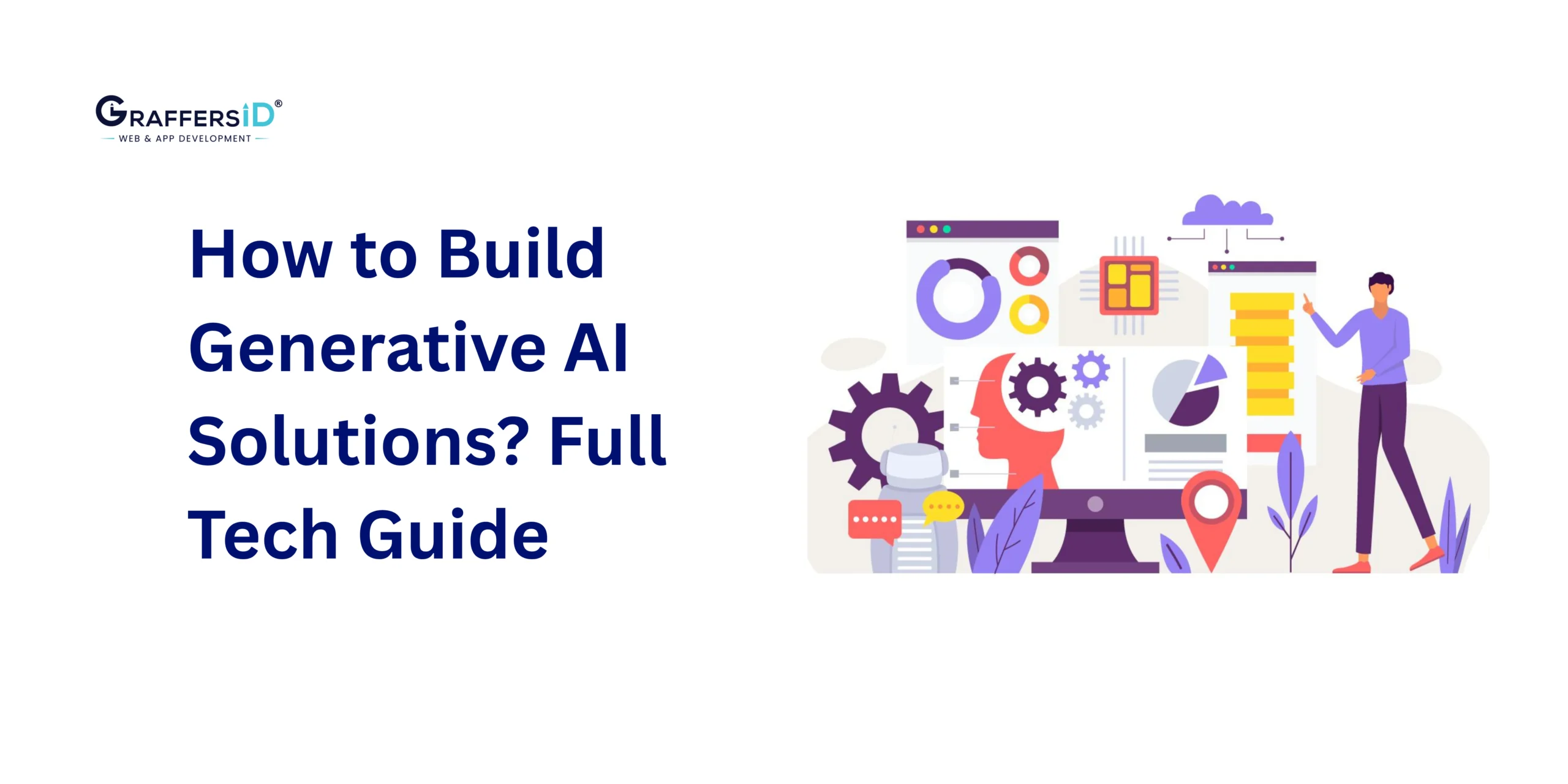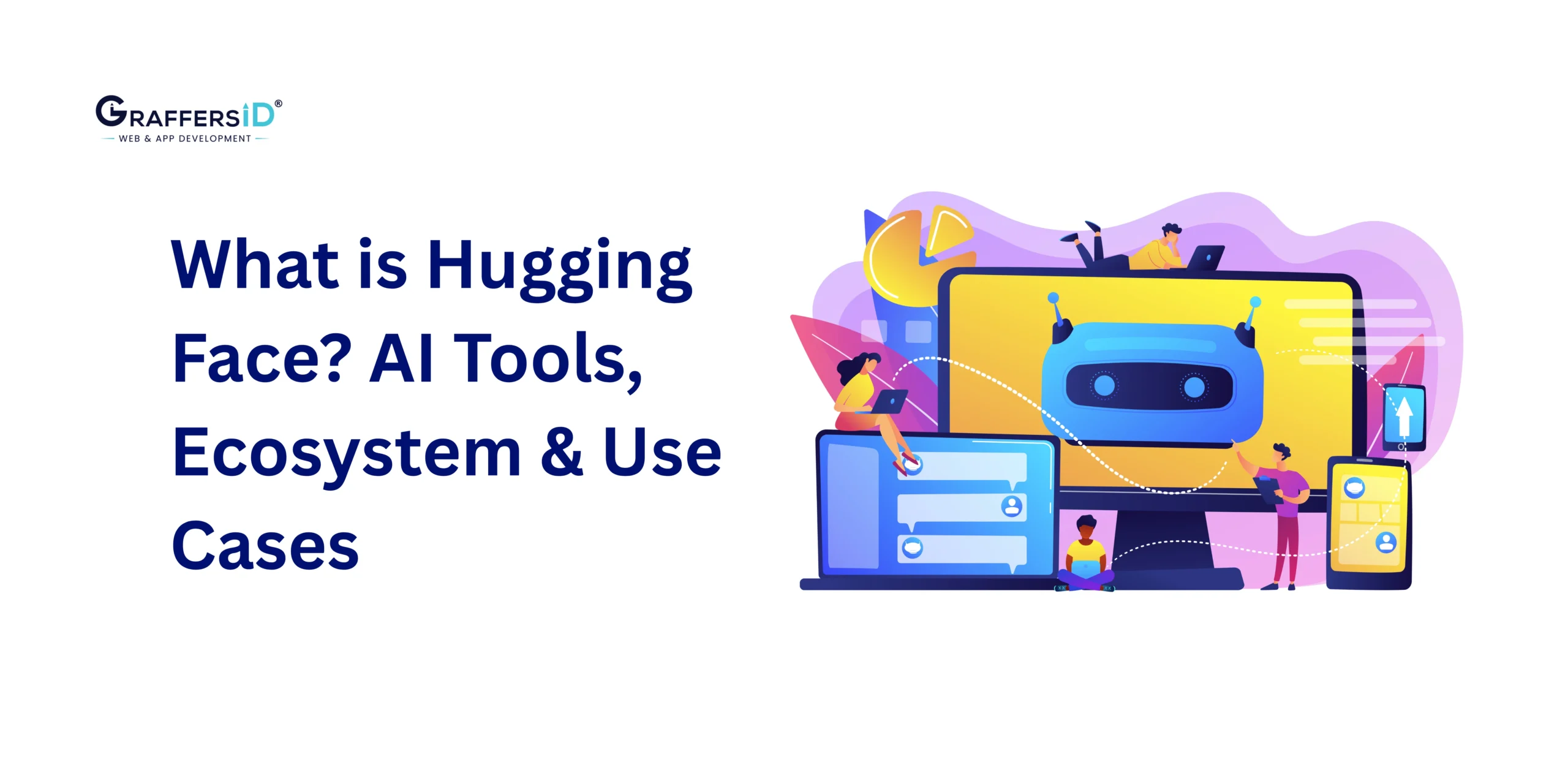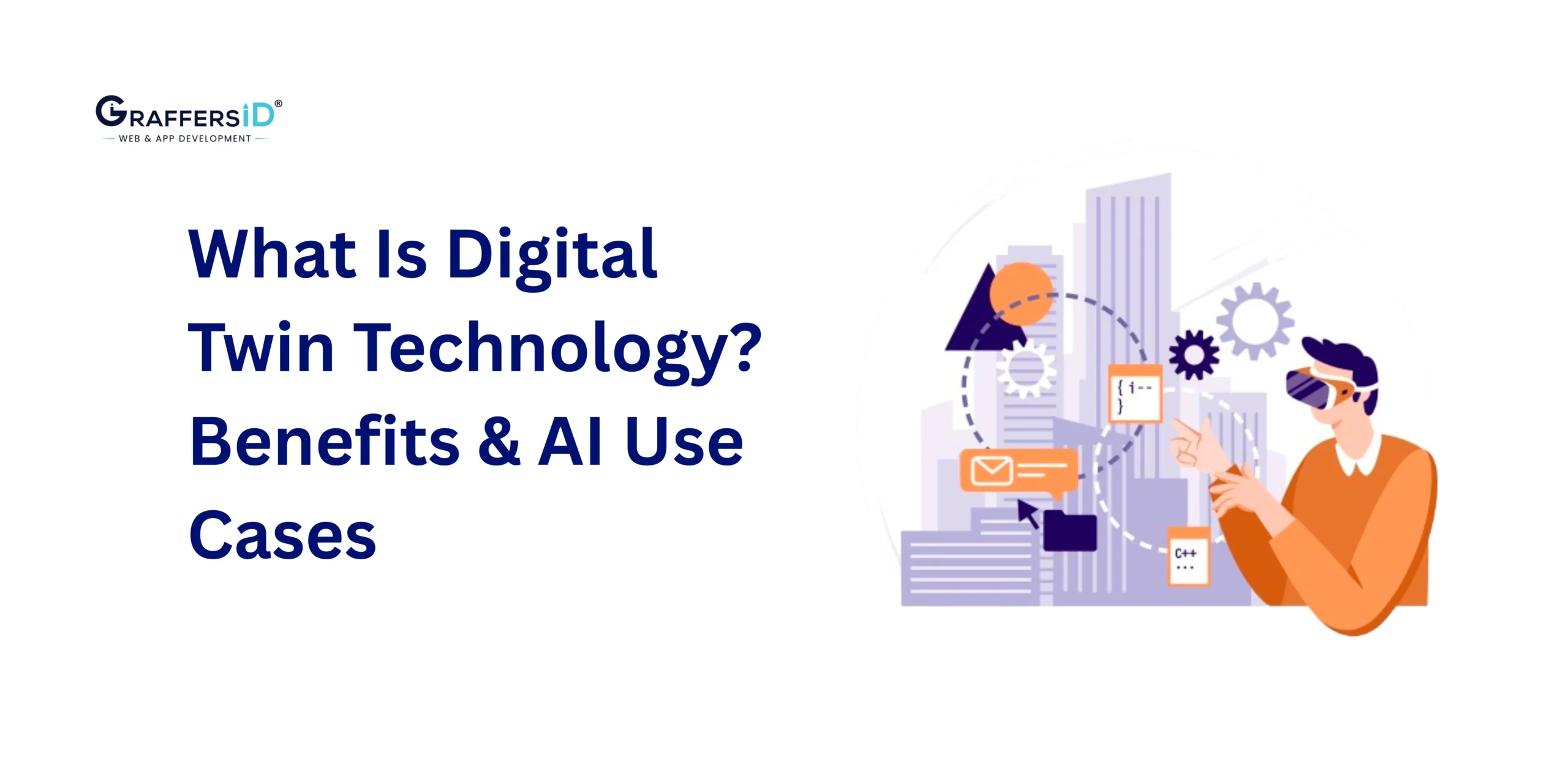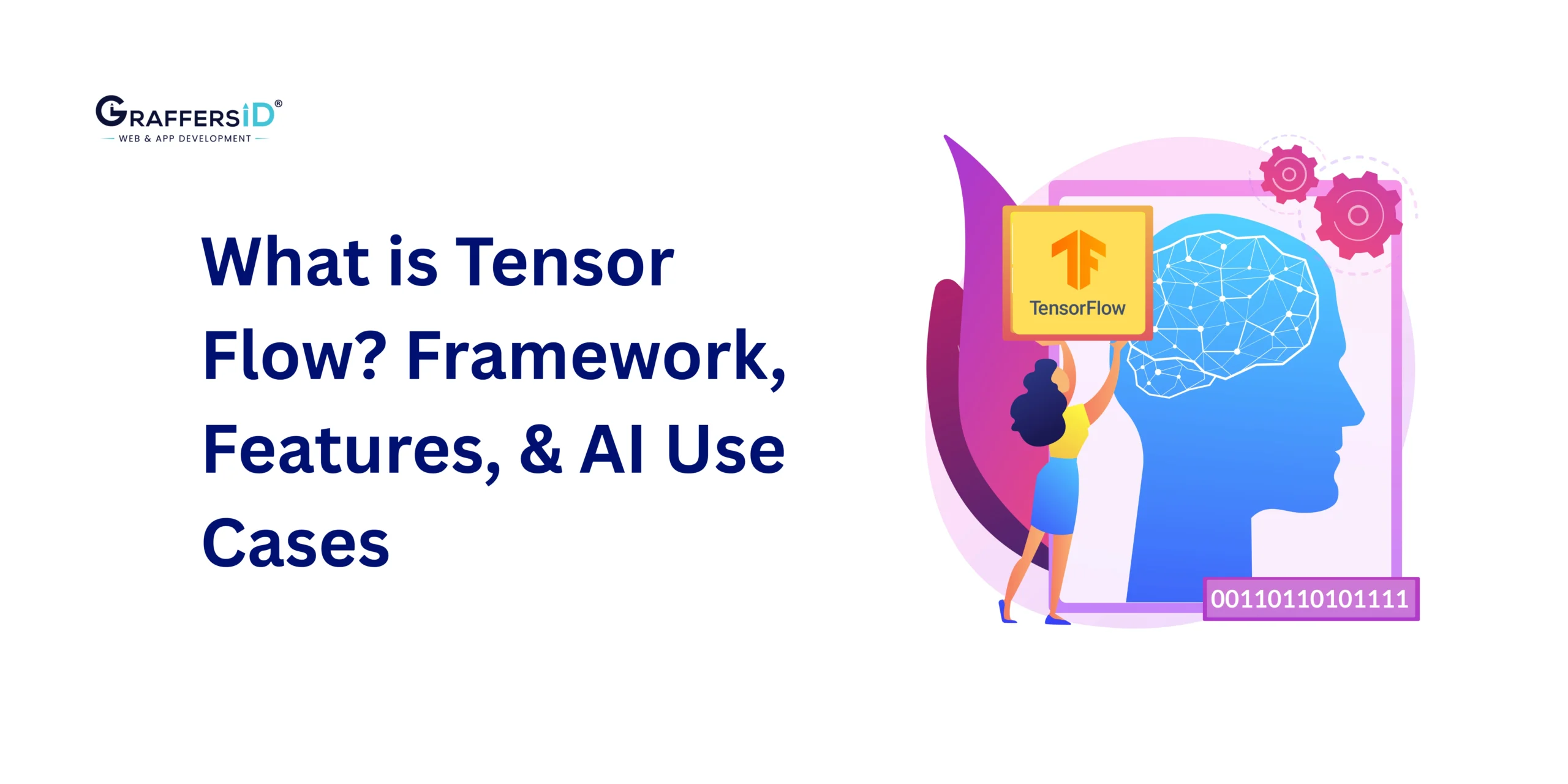Generative AI is no longer an experimental technology—it has become a must-have for businesses. From creating human-like text and hyper-personalized content to designing products and writing code, generative AI has moved from experimental labs to real-world boardrooms.
But here’s the real question: “How can you build a generative AI solution that actually works in practice and creates measurable results?”
The global AI market is valued at $11.3 billion in 2025 and expected to reach $51.8 billion by 2028. With that growth, there’s a massive opportunity—but success depends on more than just using AI tools. You need a structured, step-by-step process to design, train, and deploy solutions that bring real ROI.
This guide will walk you through that exact process: from setting goals to preparing data, choosing the right models, training, deployment, and continuous improvement.
What is Generative AI and Why It’s Important in 2025?
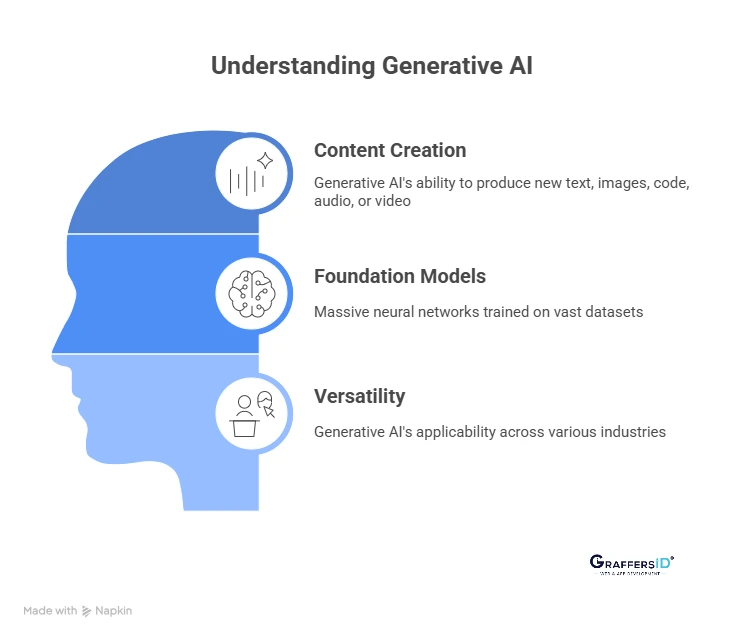
At its core, generative AI creates new content—text, images, code, audio, or video—based on patterns it has learned from large datasets. Unlike traditional AI (which analyzes and predicts), generative AI is about producing something new.
The most powerful generative AI solutions are built on foundation models—massive neural networks trained on billions of data points. These models can understand language, images, and even audio simultaneously, making them versatile across industries.
Key Model Types of Generative AI in 2025
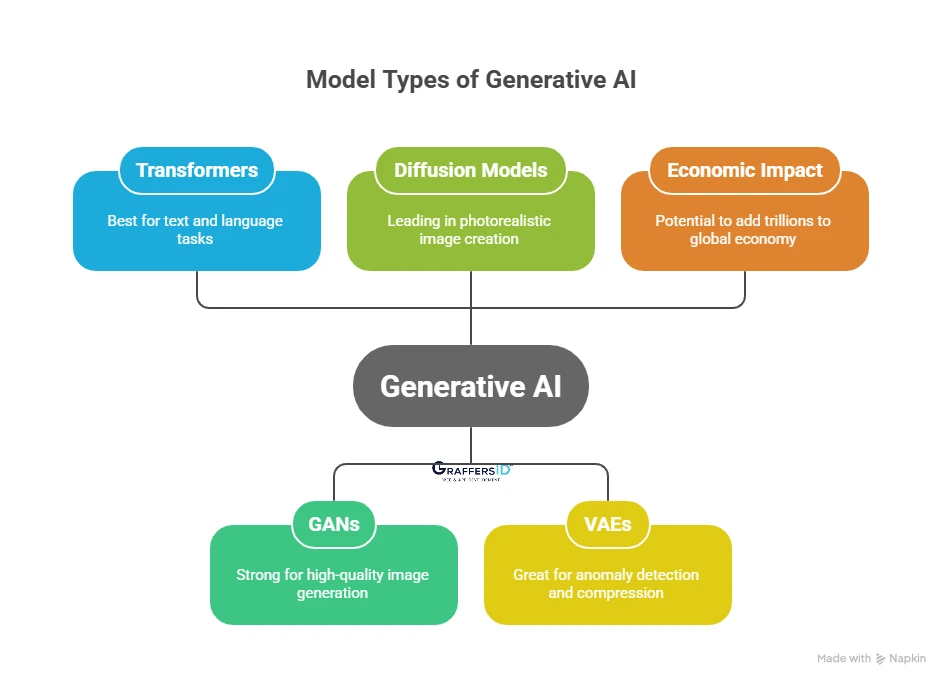
- Transformers (GPT, BERT, etc.): Best for text, code, and language tasks.
- GANs (Generative Adversarial Networks): Strong for high-quality image and media generation.
- Diffusion Models: Currently leading in creating photorealistic images.
- VAEs (Variational Autoencoders): Great for anomaly detection and compression.
The business impact is massive. McKinsey estimates generative AI could add $7–10 trillion to the global economy, while Goldman Sachs predicts it could boost U.S. GDP growth by 0.4% annually.
Step-by-Step Guide to Building a Custom Generative AI Solution in 2025
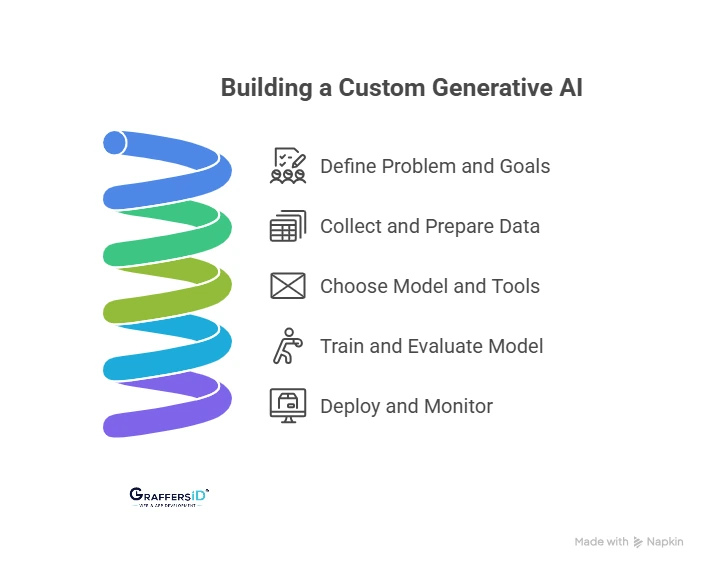
Step 1: Define the Problem and Set Clear Goals
Don’t start with “we need AI”—start with the business problem.
Ask: What process needs to be faster, cheaper, or more accurate?
Examples: Automating customer support FAQs, generating financial reports, or creating marketing content.
Key Factors:
- Time stability: Choose problems that won’t change too quickly.
- Business value: Focus on challenges that impact revenue or efficiency.
- Feasibility: Make sure AI can realistically solve it.
Once the problem is clear, define success metrics (ROI, customer satisfaction scores, reduced response time, or cost savings). Establish a baseline so you can measure improvement after implementation.
Read More: Agentic AI vs. Generative AI: Key Differences CTOs Must Know in 2025
Step 2: Collect and Prepare the Right Data
Your AI will only be as good as the data it learns from.
Sources of Data:
- Public datasets: Wikipedia, scientific papers, news archives.
- Crowdsourced data: Community-contributed.
- Synthetic data: AI-generated training examples.
- Internal data: Customer records, chat logs, product details.
Data Preparation:
- Cleaning: Remove duplicates, fix errors, and handle missing values.
- Labeling: Annotate data so the model understands context.
- Normalization: Standardize formats to avoid bias.
For sensitive data, apply masking, pseudonymization, and encryption. Stay compliant with GDPR, HIPAA, or CCPA, depending on your industry.
Step 3: Choose the Right Model and Tools
This is where most companies stumble. The wrong model means wasted time and money.
Pre-Trained vs. Custom Models:
- Pre-trained models (like OpenAI GPT or Anthropic’s Claude): Faster, cheaper, and easier to deploy.
- Custom models: Best for domain-specific tasks requiring high accuracy and control.
Many companies start with pre-trained models and later fine-tune them for their needs.
Frameworks:
- PyTorch: Favored for research and prototyping.
- TensorFlow: Great for enterprise-scale deployments.
Tools:
- Hugging Face Hub: 300K+ ready-to-use models.
- OpenAI API: Access to GPT-4 and GPT-3.5 with just a few lines of code.
Step 4: Train, Fine-Tune, and Evaluate Your Model
Training is where your solution learns to deliver results.
Training Requirements:
- Small models (~7B parameters): At least 4 GPUs with 16GB VRAM each.
- Large models (~70B parameters): 16–32 GPUs with 40GB VRAM each, often trained for months.
Fine-Tuning:
- Full fine-tuning: More accurate, but resource-heavy.
- Parameter-efficient fine-tuning (LoRA, PEFT): More cost-effective.
Use your domain-specific data to refine the model.
Example: A healthcare chatbot fine-tuned on medical journals and anonymized patient records.
Evaluation:
Measure outputs with both technical metrics (accuracy, precision, relevance) and business metrics (ROI, CSAT, task completion rate). Continuous monitoring helps prevent bias and performance drift.
Read More: OpenAI’s GPT vs. Google Gemini: Which AI Model is Better for Workflow Automation in 2025?
Step 5: Deploy, Monitor, and Improve
Now comes the real-world test: deployment.
Deployment Options:
- Cloud (AWS, Azure, GCP): Scalable, quick setup.
- On-premise: More secure, but costlier upfront.
- Hybrid: Best of both worlds—keep sensitive data local, and use the cloud for scale.
Monitoring:
Track:
- Latency (response time).
- Error rates.
- Usage patterns.
- Model drift (when outputs degrade over time).
Iteration:
Generative AI is never “done.” Continuously fine-tune models, improve with user feedback, and adapt to changing business needs.
Conclusion
Generative AI isn’t just a buzzword anymore—it’s reshaping how businesses innovate, automate, and scale in 2025. The companies winning in 2025 are not the ones chasing the latest model—they’re the ones using AI strategically, solving real problems, and iterating continuously.
For decision-makers, the key takeaway is clear: success lies in aligning generative AI with real business goals, ensuring data security, and choosing the right development approach. By leveraging expert partners, organizations can move beyond the hype and build AI solutions that are scalable, reliable, and tailored to their industry needs.
If you’re looking to harness the power of generative AI for custom solutions, automation, or AI-driven product development, GraffersID can help. Our expert AI developers and remote teams specialize in building innovative, business-focused AI applications.
Get in touch with GraffersID today to hire top AI developers and accelerate your digital transformation.
